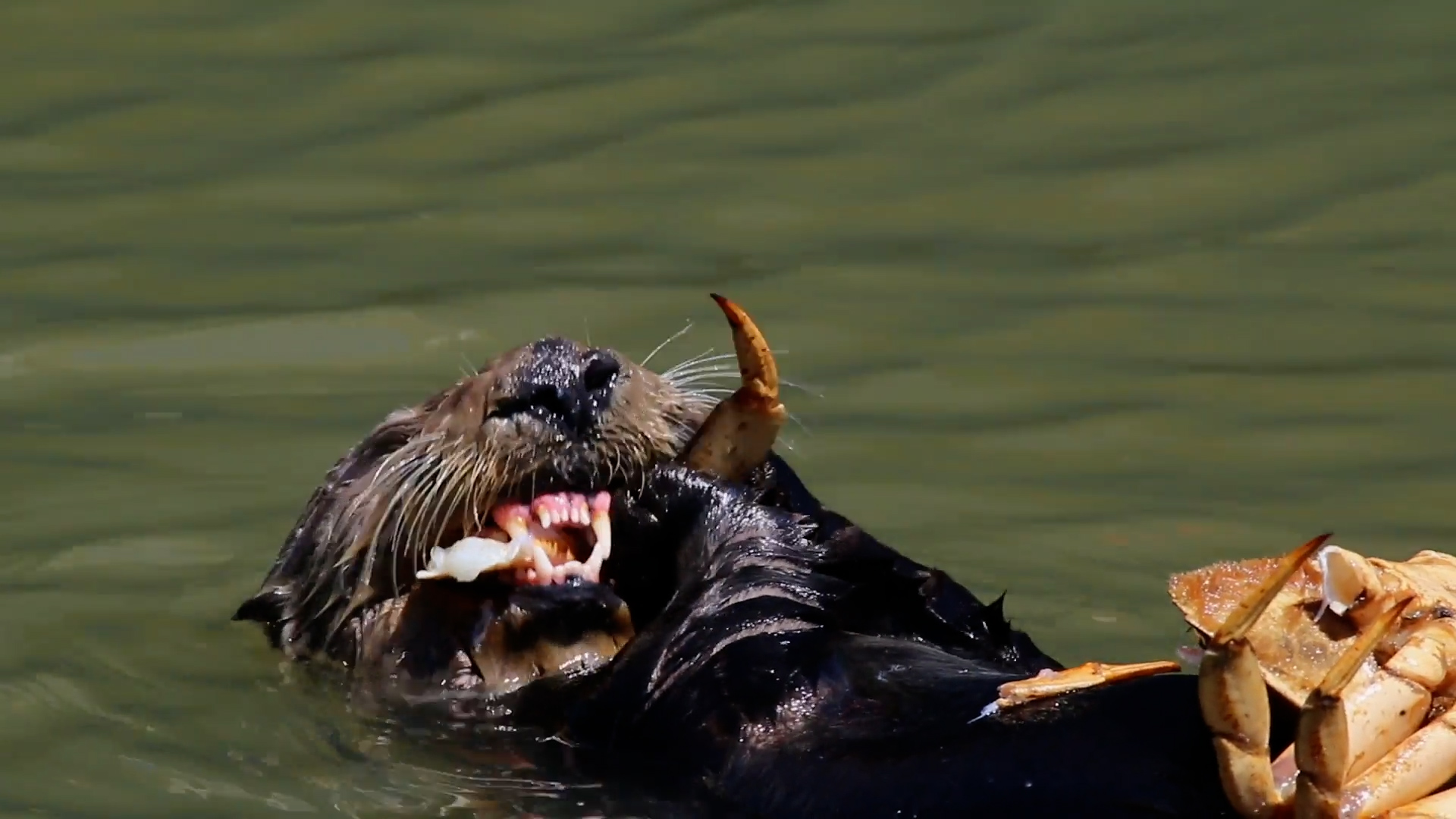Some top predators affect their prey species’ behavior and abundance to such an extent that it can impact their prey’s prey — and even species further down the food chain. As a consequence, removing the top predator can cause a domino effect called a trophic cascade.
One example of a trophic cascade is the case of sea otters in Monterey Bay’s seagrass meadows. Sea otters are voracious eaters, and when they disappeared from the slough in the 20th century, the crab population exploded. The newly abundant crabs dined on sea slugs that clear algae from seagrass; with fewer sea slugs around, the seagrasses began to die. Now, otters have returned to the bay, the crab population is back under control, and seagrass meadows are expanding once again. To learn more about how sea otters’ remarkable appetites shape coastal ecosystems, watch “Wild Hope: Significant Otters.”
